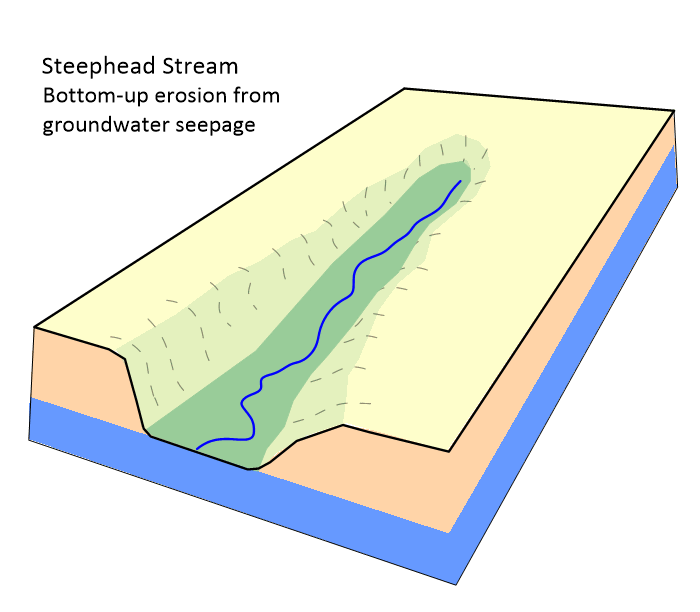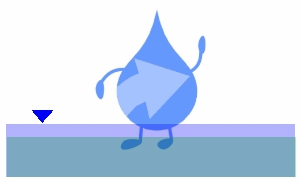Steephead valleys aren’t as famous …
Or as charismatic as a Florida spring.

Steephead valleys have a distinctive rounded shape
But they are similar in they are both groundwater fed. Unlike springs that appear in full force out of nowhere, emerging from a cavernous hold in the ground in the form of a “boil,” steephead streams are smaller in scale and at their upstream end pinch back to a vanishing point. And unlike a gully-eroded dendritic (i.e. branching) stream channel that depends on rainwater for its source, and accordingly erodes from top-to-bottom — a steephead valley contains a single stream that depends on groundwater seepage as its source. Grain by grain, that causes erosion to occur from the bottom-up, giving the ravines their trademark rounded and slumping shape. Another key difference: The gradient between its headwater and mouth are low.
What makes steepheads special? The steady flow and constant (cooler) temperature makes both the ravines and the streams home to endemic and rare northern plants. An endangered fish called the Okaloosa darter is only found in steephead streams. As for their location, they are found in isolated patches in the panhandle where the regional groundwater table and alluvial floodplain intercept.


















